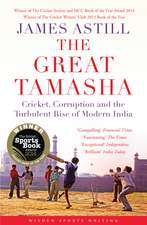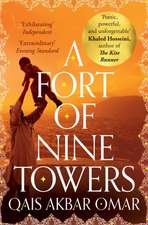Nomadic Empires: From Mongolia to the Danube
Autor Gerard Chalianden Limba Engleză Paperback – 15 feb 2006
This cogent, well-written volume examines these nomadic people, variously called Indo-Europeans, Turkic peoples, or Mongols. They did not belong to a sole nation or language, but shared a strategic culture born in the steppes: a highly mobile cavalry which did not require sophisticated logistics, and an indirect mode of combat based on surprise, mobility, and harassment. They used bows and arrows and, when they were united under the authority of a strong leader, were able to become a deadly threat to their sedentary neighbors.
Chaliand addresses the subject from four perspectives. First, he examines the early nomadic populations of Eurasia, and the impact of these nomads and their complex relationships with settled peoples. Then he describes military fronts of the Altaic Nomads, detailing events from the fourth century b.c. through the twelfth century a.d., from the early Chinese front to the Indo-Iranian front, the Byzantine front, and the Russian front. Next he covers the undertakings of the great nomad conquerors that brought about the Ottoman Empire. And finally, he describes what he calls "the revenge of the sedentary peoples, exploring Russia and China in the aftermath of the Mongols. The volume includes a chronology and an annotated bibliography.
Now in paperback, this cogent, well-written volume examines these nomadic people, variously called Indo-Europeans, Turkic peoples, or Mongols. They did not belong to a sole nation or language, but shared a strategic culture born in the steppes: a highly mobile cavalry that did not require sophisticated logistics, and an indirect mode of combat based on surprise, mobility, and harassment. They used bows and arrows and, when they were united under the authority of a strong leader, were able to become a deadly threat to their sedentary neighbors.
| Toate formatele și edițiile | Preț | Express |
|---|---|---|
| Paperback (1) | 427.50 lei 6-8 săpt. | |
| Taylor & Francis – 15 feb 2006 | 427.50 lei 6-8 săpt. | |
| Hardback (1) | 995.54 lei 6-8 săpt. | |
| Taylor & Francis – 30 noi 2003 | 995.54 lei 6-8 săpt. |
Preț: 427.50 lei
Nou
Puncte Express: 641
Preț estimativ în valută:
81.80€ • 85.64$ • 67.69£
81.80€ • 85.64$ • 67.69£
Carte tipărită la comandă
Livrare economică 05-19 aprilie
Preluare comenzi: 021 569.72.76
Specificații
ISBN-13: 9781412805551
ISBN-10: 1412805554
Pagini: 148
Dimensiuni: 152 x 229 x 12 mm
Greutate: 0.25 kg
Ediția:1
Editura: Taylor & Francis
Colecția Routledge
Locul publicării:Oxford, United Kingdom
ISBN-10: 1412805554
Pagini: 148
Dimensiuni: 152 x 229 x 12 mm
Greutate: 0.25 kg
Ediția:1
Editura: Taylor & Francis
Colecția Routledge
Locul publicării:Oxford, United Kingdom
Cuprins
1: Introduction; 2: The Military Fronts of the Altaic Nomads (Fourth Century b.c .-Twelfth Century a.d .); 3: The Apogee of the Nomads: Mongols and Turkic-Speakers (Thirteenth-Fifteenth Centuries); 4: The Revenge of the Sedentary Peoples (Sixteenth-Nineteenth Centuries)
Descriere
Nomadic Empires sheds new light on 2,000 years of military history and geopolitics






